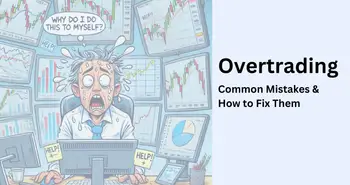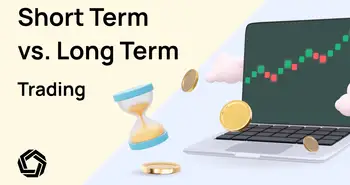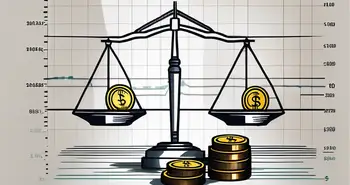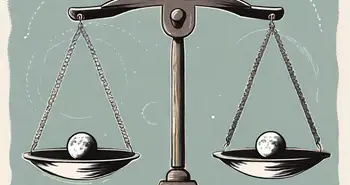The Optimal Time Frame for Traders

Trading in the financial markets requires careful consideration of various factors, one of which is the time frame. The time frame refers to the duration of trades and the holding period for positions. Choosing the right time frame is crucial for traders as it can significantly impact their profitability and overall success. In this article, we will explore the optimal time frame for traders, understand its importance, and discuss the factors influencing the selection process.
Understanding Trading Time Frames
Before delving into the optimal time frame, it is essential to have a clear understanding of what trading time frames entail. Trading time frames are categorizations used to classify the duration of trades. They range from short term to medium term to long term. Each time frame has its own unique characteristics and is suitable for specific trading strategies and objectives.
Defining Short, Medium, and Long Term Time Frames
Short-term time frames typically involve trades that last for minutes, hours, or days. Traders who prefer the fast-paced nature of short-term trading often engage in scalping or day trading strategies. Medium-term time frames encompass trades that extend from a few days to several weeks, allowing traders to capitalize on intermediate price fluctuations. Long-term time frames, on the other hand, refer to trades that are held for months to even years, targeting significant market trends.
The Importance of Time Frames in Trading
Time frames play a crucial role in shaping trading decisions and strategies. They provide traders with a framework to analyze price movements, identify trends, and determine entry and exit points. Different time frames offer varying levels of detail, allowing traders to assess market conditions from both a micro and macro perspective. The choice of time frame also influences risk management, as shorter time frames necessitate quick decision-making and potentially higher trading frequency.
Factors Influencing the Optimal Time Frame
When determining the optimal time frame for trading, several factors come into play. Understanding these factors and their implications is vital for making informed decisions and maximizing trading outcomes.
Market Volatility and Time Frames
Market volatility plays a crucial role in determining the optimal time frame for traders. Higher levels of volatility are often associated with shorter time frames as they offer more frequent trading opportunities. In contrast, lower levels of volatility are better suited for longer time frames, as position holding can capitalize on gradual price movements and trends.
Trader's Strategy and Time Frame Selection
Traders' strategies and preferences also influence the choice of time frame. Short-term traders who thrive on quick trades and immediate results may gravitate towards short-term time frames. Conversely, long-term traders with a more patient approach may find themselves drawn to longer time frames. It is crucial for traders to align their strategies and time frame selections to ensure compatibility and consistency.
Pros and Cons of Different Time Frames
Different time frames come with their own set of advantages and disadvantages. Familiarizing yourself with these can help you make an informed decision and find the optimal time frame for your trading style.
Benefits and Drawbacks of Short-Term Trading
Short-term trading offers the allure of quick profits and high trading frequency. Traders can capitalize on short-lived market movements, generating numerous opportunities. However, short-term trading requires constant monitoring, rapid decision-making, and can be more susceptible to noise and market fluctuations.
Advantages and Disadvantages of Long-Term Trading
Long-term trading offers the advantage of capitalizing on significant price trends and avoiding short-term market noise. It allows traders to take a more relaxed approach, requiring less frequent trading decisions. However, long-term trading often necessitates a larger initial investment and carries the risk of missing out on potential short-term opportunities.
Adapting to Different Market Conditions
Market conditions are dynamic, and successful traders must adapt their time frame based on the prevailing environment. This flexibility enables them to optimize their strategies and take advantage of various market scenarios.
Adjusting Time Frames in Bullish Markets
In bullish markets characterized by upward price trends, shorter time frames can be favorable. Traders can benefit from the momentum and capitalize on short-term price surges. However, it is important to remain vigilant as market sentiment can change rapidly.
Modifying Time Frames in Bearish Markets
In bearish markets marked by downward price trends, longer time frames can provide traders with a clearer perspective. Longer holding periods can help traders navigate volatile periods and ride out temporary price drops, allowing for better risk management. However, it is vital to remain cautious and implement appropriate exit strategies to protect against potential losses.
Tools for Determining the Optimal Time Frame
Several tools and techniques can assist traders in determining the optimal time frame for their trading endeavors.
Technical Analysis for Time Frame Selection
Technical analysis plays a vital role in identifying trends and understanding market dynamics. Traders can use various technical indicators and chart patterns to gauge different time frames' suitability. By analyzing price charts and indicators, traders can identify patterns and key levels of support and resistance, guiding them toward an appropriate time frame.
Fundamental Analysis and Time Frame Determination
Complementing technical analysis, fundamental analysis helps traders understand the broader market conditions and factors influencing price movements. Evaluating economic indicators, company fundamentals, and geopolitical events can aid traders in choosing a time frame that aligns with their fundamental outlook.
Conclusion
Choosing the optimal time frame is a critical aspect of successful trading. It involves understanding the various trading time frames, assessing the factors influencing time frame selection, and adapting to different market conditions. By finding the right time frame that suits their trading style and objectives, traders can enhance their profitability and achieve greater trading success.
FAQ
1. What is the optimal time frame for trading?
The optimal time frame for trading depends on the trader's preferences, strategy, and market conditions. Short-term traders may prefer shorter time frames for quick trades, while long-term traders may opt for longer time frames to capture significant price trends. It is important to experiment and find the time frame that aligns with your trading style and objectives.
2. How does market volatility affect time frame selection?
Market volatility influences time frame selection by dictating the frequency of trading opportunities. Higher levels of volatility may favor shorter time frames, while lower levels of volatility may be better suited for longer time frames. Traders should consider the prevailing volatility levels and adapt their time frame accordingly.
3. Can I switch time frames based on market conditions?
Absolutely! Adapting to different market conditions is essential for traders. It is recommended to modify time frames based on market trends and dynamics. Shorter time frames may be more suitable in bullish markets, while longer time frames may be preferred in bearish markets.
4. How can I determine the optimal time frame?
Determining the optimal time frame involves considering factors such as market volatility, trading strategy, and personal preferences. Technical analysis and fundamental analysis can provide valuable insights when selecting a time frame. By experimenting, learning from experience, and continuously evaluating your trading performance, you can find the time frame that best suits your needs.
5. Is it important to align my trading strategy with the chosen time frame?
Yes, it is crucial to align your trading strategy with the chosen time frame. Different trading strategies are better suited for specific time frames. Short-term strategies require quick decision-making and frequent trades, while long-term strategies require a more patient approach. Ensuring consistency between your strategy and time frame will enhance your trading effectiveness and overall success.
By understanding the optimal time frame for traders, considering the influencing factors, and adapting to market conditions, you can make informed decisions and maximize your trading potential. Remember to experiment, learn from experience, and continuously evaluate your performance to find the time frame that works best for you.
Now that you're equipped with the knowledge to select the optimal time frame for your trading strategy, take the next step with Morpher. Experience a revolutionary trading platform that harnesses blockchain technology to offer zero fees, infinite liquidity, and a multitude of markets including stocks, cryptocurrencies, and more. With Morpher, you can start investing with as little as $1, enjoy the benefits of fractional investing, short selling without interest fees, and up to 10x leverage to amplify your trades. Your safety is paramount with our non-custodial Morpher Wallet, giving you full control over your funds. Ready to transform your trading experience? Sign Up and Get Your Free Sign Up Bonus at Morpher.com and join the future of investing today.

Disclaimer: All investments involve risk, and the past performance of a security, industry, sector, market, financial product, trading strategy, or individual’s trading does not guarantee future results or returns. Investors are fully responsible for any investment decisions they make. Such decisions should be based solely on an evaluation of their financial circumstances, investment objectives, risk tolerance, and liquidity needs. This post does not constitute investment advice.

Painless trading for everyone
Hundreds of markets all in one place - Apple, Bitcoin, Gold, Watches, NFTs, Sneakers and so much more.

Painless trading for everyone
Hundreds of markets all in one place - Apple, Bitcoin, Gold, Watches, NFTs, Sneakers and so much more.









